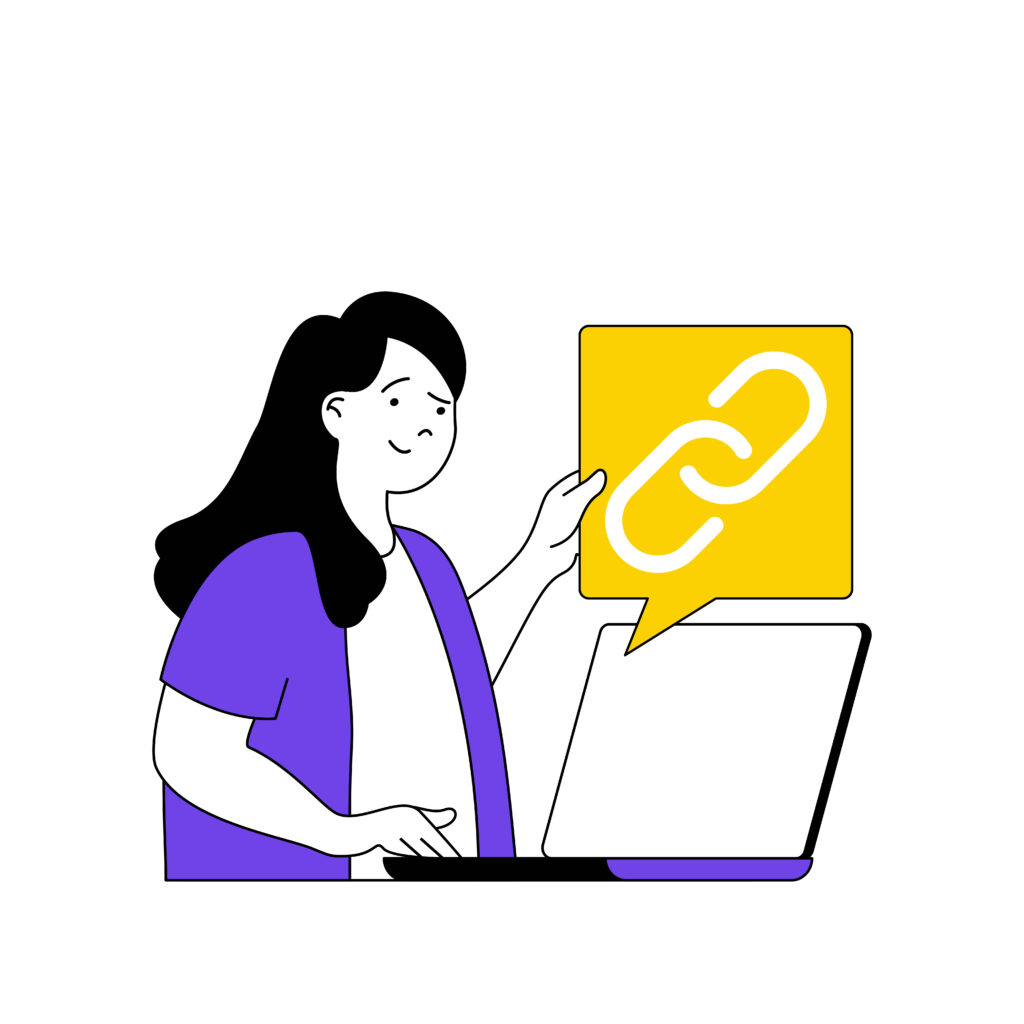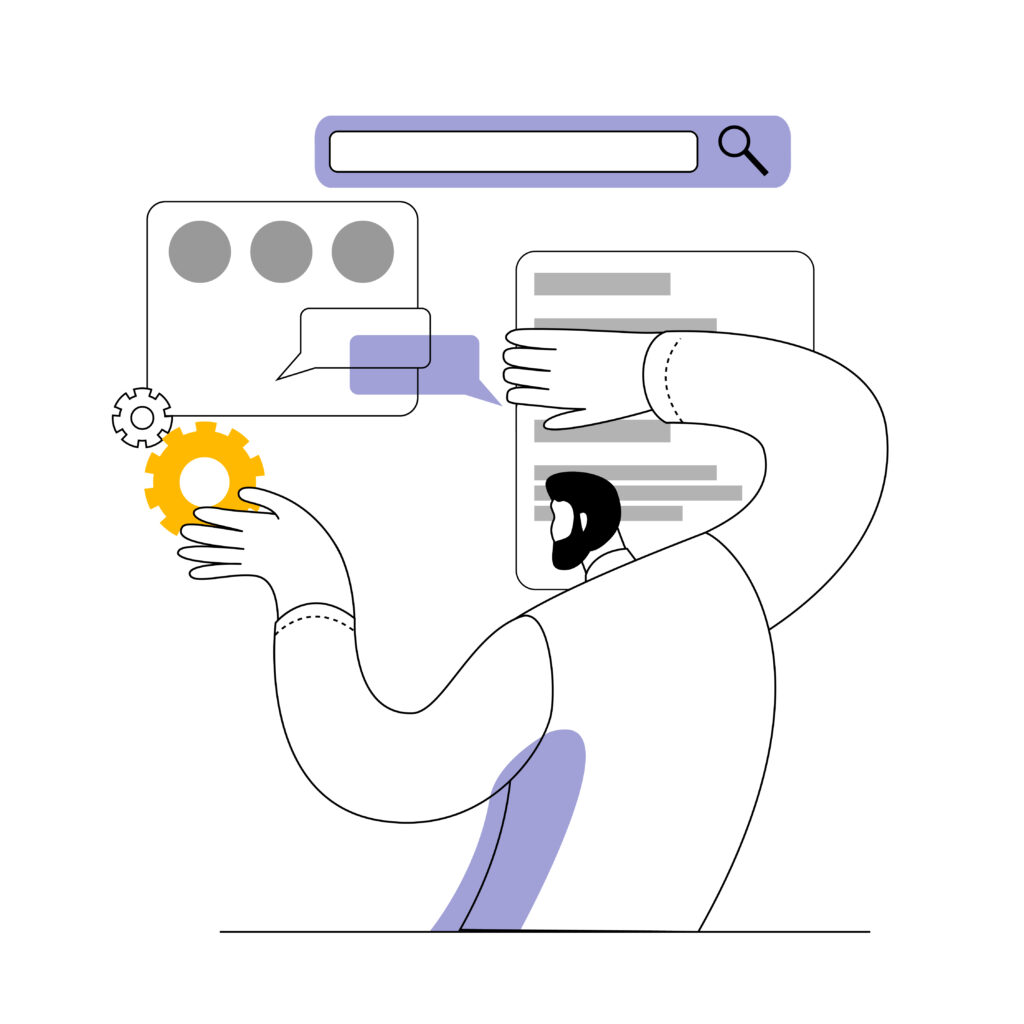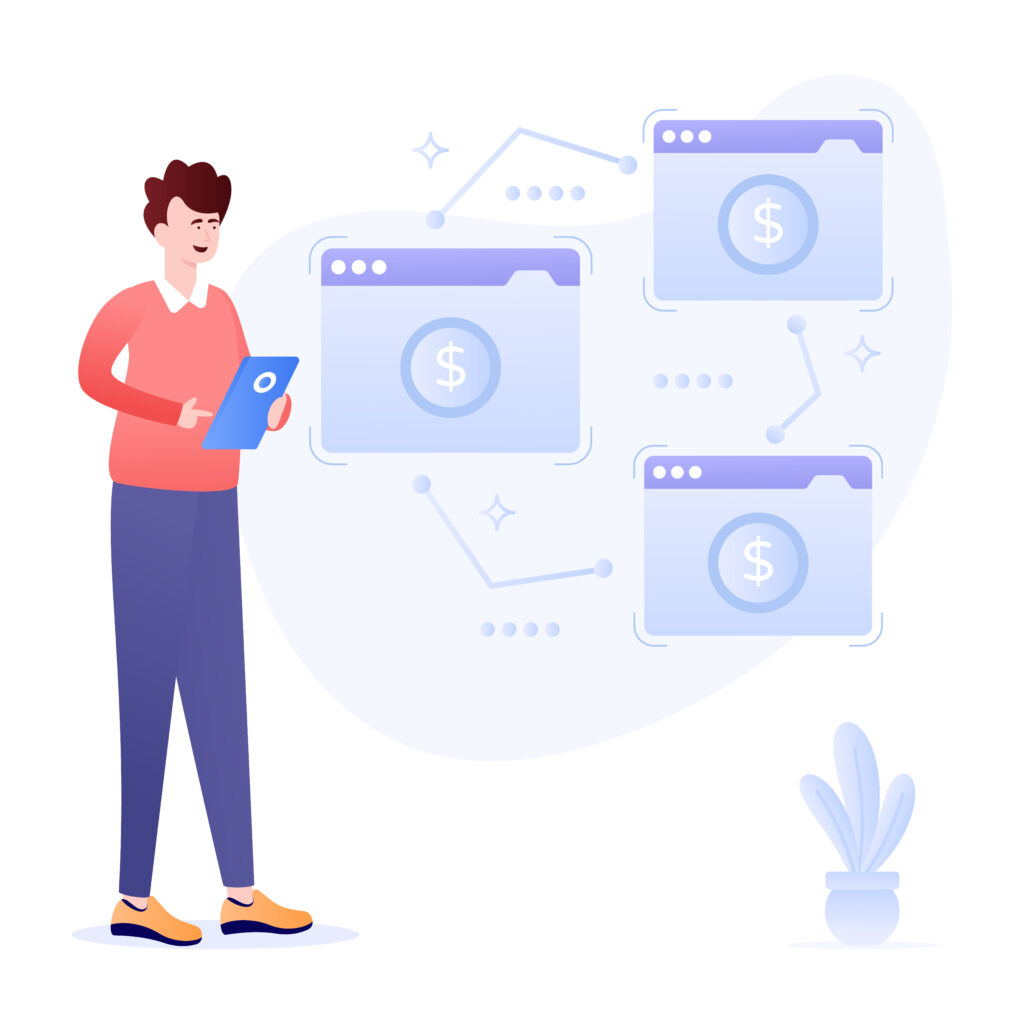Ever wonder why some websites always show up at the top of Google, even with so much competition? It might be because of a simple but powerful strategy called internal linking. By using internal links wisely, you can boost your website’s appeal to search engines.
Internal links do more than just improve how your site works for visitors. They also help Google and other search engines better understand and show off your best pages. This makes sure important parts of your website get the attention they deserve in search results.
Key Takeaways
- Internal linking for website ranking is essential; it connects your content, creating a coherent structure.
- Executing internal linking best practices facilitates navigation for both users and search engine bots.
- Internal links help Google understand the relevance and relationship of your pages.
- A strong internal linking strategy can boost the prominence of important pages.
- Thoughtful internal linking is crucial to elevate site valuation by leading search engines.
Understanding Internal Links
Learning about internal links is key for better content SEO and improving your site structure. These links help visitors move around your site. They also form the basic design of your website.
What Are Internal Links?
Internal links are links that take you from one page to another on the same website. They are super important for helping both people and search engines find their way around. This helps create a clear path for visitors to follow through your content. And, it boosts your site’s design by keeping everything connected.

Types of Internal Links
There are a few different types of internal links you can use. Let’s look at how they can make your site easier to navigate and improve your content SEO:
- Navigational Links: They help visitors move around your site by linking to different pages.
- Footer Links: At the bottom of your site, these links often lead to important pages like your privacy policy.
- Contextual Links: Found within your text, they link to other articles or pages that relate to what you’re talking about.
- Sidebar Links: Shown in the sidebar, these links point to popular posts or related topics, keeping visitors engaged.
Examples of Internal Links
Internal linking can be a smart strategy. Here’s how:
- Linking from a post about “Healthy Eating” to one on “Nutritional Benefits of Vegetables” offers readers a natural path to follow.
- Connecting a “Smartphone” product page with a page on “Smartphone Accessories” makes browsing more fun and supports your site’s design.
- Linking the homepage to categories like “Men’s Clothing” and “Women’s Clothing” spreads link value throughout the site evenly.
By mastering internal links, you help people find your website more easily. This also ensures your content SEO plan is well-organized and engaging from the start.
How Internal Linking Benefits SEO
Internal linking is a big help in boosting a website’s SEO. It involves adding links within your content. When done right, this can make your website better in many ways. It helps with moving around the site, making it more useful for users and boosting where you show up in searches. Let’s dive into how important internal links are for your SEO.

Enhances Site Navigation
One key benefit of internal linking is better site navigation. By linking to related content, you guide users to more of what they’re interested in. This makes them stay on your page longer. It also tells search engines that you have good, helpful content, which might help push your site up in searches.
Improves User Experience
Internal links also lead to a smoother user experience. They help visitors easily move to pages that matter to them. This keeps them reading and exploring more of what you offer. Search engines take note of this smooth journey, possibly boosting your search rankings.
Passes Link Equity (PageRank)
Adding internal links can spread the love across your site. Link equity or PageRank moves from stronger pages to others, helping them rank better. This tactic not only makes your content more visible but also directs attention to key pages.
| Benefit | Description |
|---|---|
| Site Navigation | Improves the ease with which users find content, leading to better engagement and higher search rankings. |
| User Experience | Creates a smoother and more intuitive site journey, increasing user satisfaction and dwell time. |
| Link Equity (PageRank) | Distributes the ranking power from high-authority pages to other pages, boosting their SEO potential. |
The Importance of Internal Linking
Developing a strong SEO strategy involves understanding the significance of internal linking. It helps to improve Google rankings. Also, it boosts page authority and makes sure search engines index our site quicker.
Internal links are places carefully to guide Google’s crawlers around our site easily. This makes sure important pages get noticed quickly. It also sends more link power to these pages, making them more authoritative to search engines.
Internal linking is vital for a good SEO strategy because of three key reasons. First, it makes the visitor’s journey smooth and straightforward. Second, it shows search engines how pages relate, helping to build a logical site map. Third, it improves Google rankings by making key content easier to find and trust.
| Benefits | Description |
|---|---|
| Enhanced Page Authority | Distributes link equity to vital pages, boosting their SEO value. |
| Faster Indexing | Helps search engines crawl and index pages efficiently. |
| Improved Rankings | Well-placed internal links can elevate overall Google rankings. |
| Better User Experience | Facilitates easier navigation, enhancing user satisfaction. |

In summary, using internal links wisely has a big effect on our site’s success and reputation. It tells search engines what our best pages are, and helps them explore our site better. This makes for a site that’s easier to use, which in turn boosts our SEO.
Building an Effective Internal Linking Strategy
To make your website better, you need a good internal linking strategy. It helps your site’s structure and SEO. This strategy brings together different steps to make your site easy to navigate.
Setting Up the Structure
The first thing is to create a strong site structure. Think about it like a pyramid. Your homepage is on top, then main categories, and lastly, posts or pages. This setup makes sure that link value flows well from top to bottom. It helps search engines and visitors find and use your content easily.
Identifying Key Pages
After you’ve set up the structure, you pick the most important pages. These are your cornerstone content. They are critical pages that you want to show off. By choosing these pages, you can smartly link to them within your site. This raises their importance and SEO value.
Using Keyword-Rich Anchor Text
Using the right relevant anchor text is crucial too. It means putting keywords in your link’s text. These keywords should tell what the linked page is about. This not only helps users know what to expect. It also tells search engines how relevant the page is. This boosts your site’s SEO.
| Step | Description | SEO Impact |
|---|---|---|
| Setting Up the Structure | Hierarchical arrangement from homepage to posts. | Ensures efficient link value distribution. |
| Identifying Key Pages | Choosing cornerstone content to prioritize. | Enhances visibility and authority of key pages. |
| Using Keyword-Rich Anchor Text | Incorporating keywords in anchor text. | Improves page relevance signals to search engines. |

Best Practices for Internal Linking
Creating a good internal linking strategy is about balance. Connections in your content should be easy to use and make the reader’s visit better. These best practices will boost your SEO and make your site more enjoyable to use.
Avoiding Over-Optimization
Using keywords in your links is important, but too much can be bad. It might make your site look like spam. Mix up your anchor texts so they blend naturally in your content.
Linking to Relevant Content
Your link strategy should be about connecting to the right pages. Make sure linked pages fit well with what your reader is seeing. This makes both readers and search engines see your content as coherent and useful.
| Best Practice | What to Avoid |
|---|---|
| Mixing Anchor Texts | Repeating the Same Anchor Text Everywhere |
| Linking to Contextually Relevant Pages | Using Irrelevant or Unrelated Links |
| Keeping User Experience in Mind | Focusing Solely on SEO Tactics |
Following these best practices will help you balance SEO with good reader journeys. You’ll avoid over-optimizing while using relevant links fully.
Common Internal Linking Mistakes to Avoid
When you make a website, watch out for common mistakes in linking. One big mistake is using the same link text too much. It makes things confusing for users and search engines.
Linking to unimportant pages is a problem too. If you put too many links to less important things, your site’s SEO can suffer. Focus on linking to pages that bring real value.
Don’t forget about your site’s mobile version. Today, mobiles are key to your site’s success. Make sure your links work well on mobile too. This way, users are happy, and your ranking stays good.
Be careful with ‘nofollow’ tags. Using them right is important. But, using them everywhere can hurt your site’s ranking.
Regularly check your links to keep them working well. Doing audits find and fix these mistakes. This keeps your internal links helping your site do better in searches.
Tools to Help with Internal Linking
In the SEO world, using the right tools can really boost your site’s internal link setup. I’ll walk you through some top tools that can make a big difference.
Yoast SEO
The Yoast SEO plugin is a top pick for many website owners. It suggests relevant content to link to as you create new content. This helps keep your link structure smooth and ensures important pages aren’t missed out. Plus, it gives insights on your link distribution, helping you create a strong internal link network.

Google Search Console
Google Search Console insights are key for seeing how your site’s links are spread out. This tool shines a light on pages that could use more links to improve their visibility. It also lets you study your internal links, making it easier to improve your site’s navigation and user experience.
Semrush
Semrush is a powerful SEO tool for internal linking analysis. It gives in-depth reports and recommendations to fine-tune your internal link strategies. With Semrush, you can check your links’ performance and spot areas for enhancement. This detailed look helps lift your site’s overall SEO performance.
Using Yoast SEO plugin, Google Search Console insights, and Semrush together in your toolbox can really enhance your internal linking strategy. These tools each offer unique benefits, making it possible to manage and optimize your internal links effectively.
Case Studies: Successful Internal Linking Strategies
Studying case studies of good SEO internal linking can teach us a lot. For example, HubSpot saw big jumps in their site’s authority and search results. They achieved this by picking key content and linking it to other relevant posts. As a result, they got a lot more visitors from search engines.
- Growth in organic traffic
- Enhanced page authority
- Better user engagement
“After optimizing our internal link structure, we saw a 30% increase in organic search traffic within four months,” stated a HubSpot spokesperson, highlighting the importance of smart internal linking.
Similarly, Backlinko used internal links to boost the power of their content. This move helped key pages show up higher in search results, sometimes even double. It shows how carefully placing links within your site can make a big difference for SEO.
| Company | SEO Outcome |
|---|---|
| HubSpot | 30% increase in organic search traffic |
| Backlinko | Doubling of key page search positions |
These case studies prove the value of strong internal linking for link value optimization. By following their lead, you can improve your site’s SEO results.
Internal Linking and E-commerce Websites
Adding internal links to e-commerce sites boosts how users see and find them on search engines. By connecting category pages, optimizing product pages, and suggesting related items, sites improve both SEO and user experience.
Category Pages
Category pages are key for organizing products on an e-commerce site. Make sure each category page links to many products and other categories. This improves e-commerce SEO and helps users quickly find what they’re looking for.
Product Pages
Product page optimization is about more than just great descriptions. It includes strategic links. Each product page should link to its main category and possibly to similar items. This way, your e-commerce SEO improves and users have an easier time finding what they need.
Related Products and Accessories
Showing related products and accessories can boost sales and customer happiness. By linking these suggestions, you help users smoothly find what they’re looking for. Plus, it helps search engines make sense of how products on your site are connected, which can help your site rank better.
Monitoring and Adjusting Your Internal Linking Tactics
To make the most of internal linking, it’s key to keep an eye on it and make changes as needed. This way, you can keep your site’s structure top-notch and get better results in search engines.
Conducting Regular Audits
It’s crucial to check your site’s internal links often. This helps spot issues like broken links or links to pages that don’t help with search engine goals. It’s important to check where your links are and how well they work. By doing this, you make sure your site is easy to navigate.
Analyzing Internal Link Performance
Evaluating how well your links are doing is a must in SEO work. By doing an “internal link performance analysis,” you find out which links bring in the most visitors and which could do better. Google Analytics and similar tools offer lots of data to help with this. This way, you can keep your links working well for your site.
Future Trends in Internal Linking
The way we do internal linking is changing a lot. Thanks to leaps in AI and machine learning, we’re on the brink of big shifts. These changes will alter how we handle SEO moving forward.
The Rise of AI and Machine Learning
AI is becoming more important in the world of SEO. It lets companies guess and set up the best ways to link inside their websites. Meanwhile, machine learning allows systems to watch how users act and how websites do. This makes linking smarter and more useful.
Evolving SEO Practices
Our strategies for internal linking keep on changing. To stay ahead, it’s crucial to follow these new SEO approaches. They’re born from tech progress, new search engine rules, and how users act online.
| Trend | Impact on Internal Linking |
|---|---|
| AI in SEO | Automates and predicts optimal linking structures, enhancing accuracy and efficiency in link placement. |
| Machine Learning Trends | Analyzes user behavior and site performance, allowing for dynamic and responsive internal linking strategies. |
| Evolving Internal Linking Practices | Adapts to changing SEO practices and algorithms, ensuring consistent relevance and effectiveness in search rankings. |
Conclusion
Internal linking is vital for a strong SEO strategy. It’s about more than just linking pages. It shapes our site’s setup, making navigation smooth. This technique shows how important different pages are to search engines like Google. So, by improving internal links, we boost how our site is seen and ranked online.
Improving internal links uses our site’s SEO power well. We should follow key steps, like setting a clear order and using important words in the links. This approach boosts how often our site appears and how viewers interact with it. Keeping an eye on this and fine-tuning as needed leads to ongoing SEO triumphs, making our site adaptable to changes in how search engines work.
It’s important to focus on building a smart internal linking network. We accomplish this by following the right steps. These steps not only refine our site’s design but also enhance how customers and search engines view it. This strategy makes our SEO efforts better and keeps us ahead in the online world. So, dedicating time to link well is key to a website’s lasting success.
